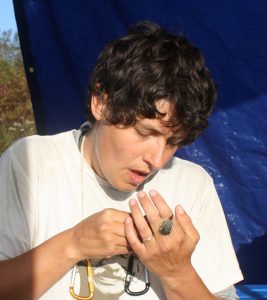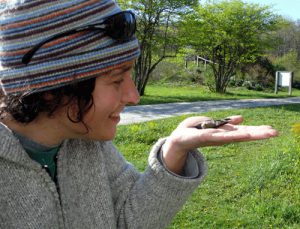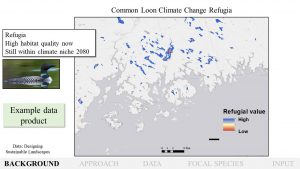Incorporating climate change refugia into climate adaptation in Acadia National Park
Acadia’s diverse landscapes are home to many different plants and animals, including many that are at the southern edge of their range or need specific habitat like spruce-fir forest. The fate of park wildlife and landscapes as the climate continues to warm is a major concern for park managers, but not an easy one to address.
Studies of future habitat suitability for some plants and animals have been conducted for the Northeast region, but not typically at a scale that is relevant to people trying to manage and protect park resources.
Jennifer Smetzer, who studied bird migration in the Gulf of Maine for her doctoral research, identified parts of Acadia that, because of features like topography or proximity to water, may be buffered from the full effects of climate change. Called “climate change refugia,” these places represent potential future habitat where vulnerable species might survive. Smetzer met with park managers and staff from Maine Department of Inland Fisheries and Wildlife, U.S. Fish and Wildlife Service, and other organizations to come up with a list of species that are of cultural importance or of management concern, and that represent a range of habitats (black-throated green warbler, olive-sided flycatcher, American bittern, mink frog, Northern flying squirrel, red spruce, Northern white cedar, paper birch, Labrador tea, three-toothed cinquefoil, and black crowberry). Using new fine-scale climate and land change maps, developed by the Landscape Ecology Lab at the University of Massachusetts Amherst and the USGS Northeast Climate Science Adaptation Center, Smetzer produced maps of potential climate change refugia for each species—areas where current and future distribution overlap. Working with colleagues in the Refugia Research Coalition, met with stakeholders again in Summer 2019 to share the results and refine the final products.
“Our work doesn’t end there. We are trying to bridge the gap between research and practice to make sure the results get into the hands of managers and scientists, and can be communicated to the public, too,” she said. The seemingly never-ending impacts of climate change can feel overwhelming to park managers. This project aims to offer a positive opportunity to react, by helping managers to focus ongoing management or protections to locations where suitable climate conditions may persist for at-risk species. Smetzer is continuing to work with natural resource agencies to help prioritize refugia management strategies given other considerations that the park faces for the future, such as budgets, visitor behavior, public interest, and occurrence patterns of other species.
Learn more about the Refugia Research Coalition.






